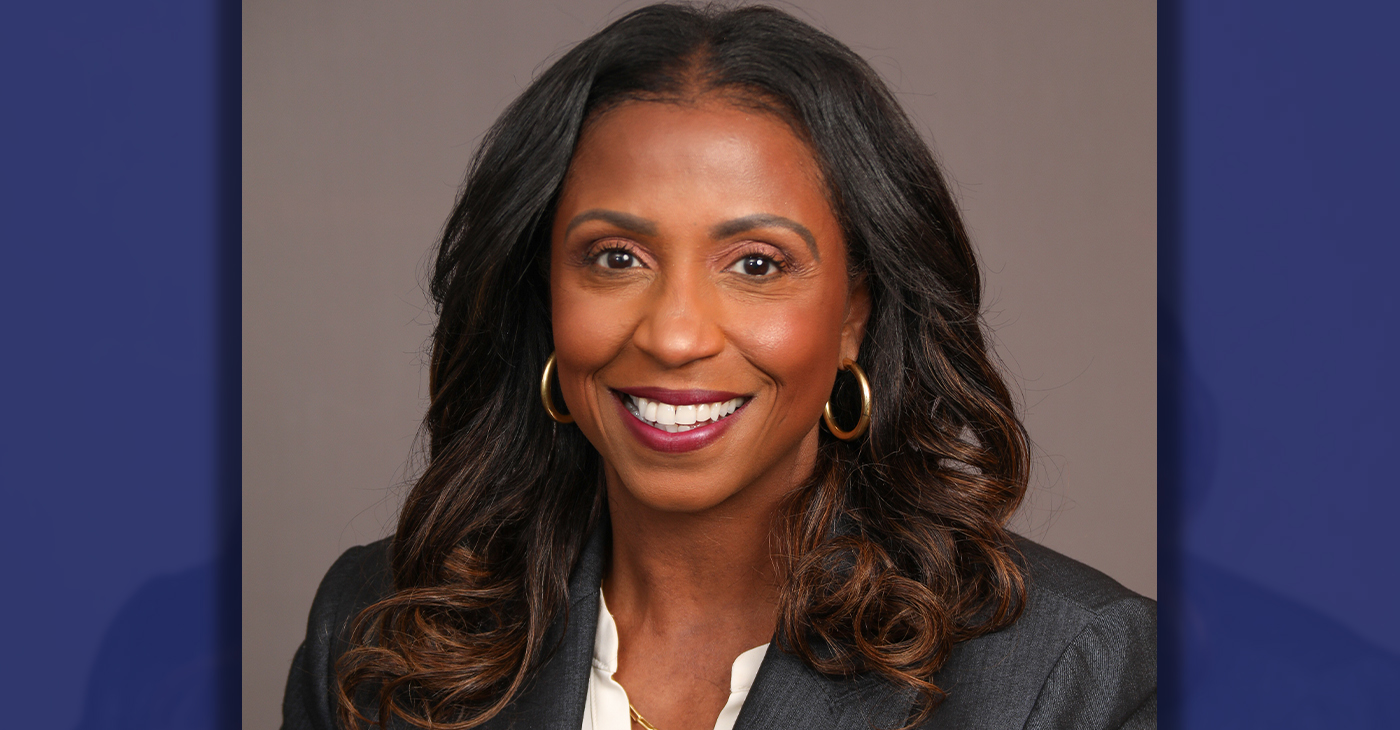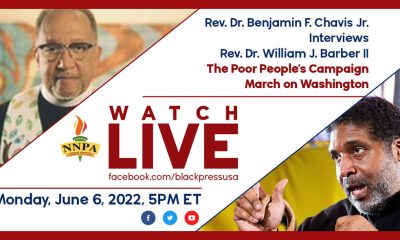Business
‘Right-to-Work’ Laws Depress Union and Non-Union Wages

African Americans are also more likely to live in “right-to-work” (RTW) states than non-RTW states. (Stock Image)
By Freddie Allen
NNPA Senior Washington Correspondent
WASHINGTON (NNPA) – Despite what the defenders of “right-to-work” laws claim, those policies offer less protection for employees and depress the wages of non-union and union workers, according to a new report by the Economic Policy Institute.
The report by the Economic Policy Institute (EPI), a progressive research and advocacy group focused on low- and middle-income workers, said that, “right-to-work (RTW) laws seek to hamstring unions’ ability to help employees bargain with their employers for better wages, benefits, and working conditions.”
In 11 out of the 25 right-to-work states, Blacks account for a higher share of the state population than the national average (13.2 percent). Those states are Alabama, Arkansas, Florida, Georgia, Louisiana, Michigan, Mississippi, North Carolina, South Carolina, Tennessee and Virginia. African Americans are also more likely to live in RTW states than non-RTW states.
The EPI report said that Blacks account for 7.1 percent of workers in non-right-to-work states and 14 percent of workers in right to work states, compared to Whites who make up for 70.3 percent of workers in non-RTW states and 62.6 percent of workers in RTW states.
Opponents of right-to-work laws also argue that workers don’t need such laws to protect them from being forced to join unions because that’s already illegal.
In a blog post originally published in the New York Times, EPI senior economist Elise Gould wrote: “Right-to-work goes one step further and entitles employees to the benefits of a union contract – including the right to have the union take up their grievance if their employer abuses them – without paying any of the cost.”
That means that non-union members are entitled to help from unions when they run afoul of employers, even though they don’t support them by paying dues.
As union membership dips to historic lows, economists say that those RTW work laws have contributed to the decline of unions nationwide.
But when employees don’t have to contend with RTW laws, employers find ways to pay more.
“Average hourly wages, the primary variable of interest, are 15.8 percent higher in non-RTW states ($23.93 in non-RTW states versus $20.66 in RTW states),” stated the report.
Workers earn about $1,500 less per year in RTW states compared to non-RTW states and employees.
“It’s abundantly clear that right-to-work laws are negatively correlated with workers’ wages,” said Gould.
And because Blacks lean on unions more to promote wage equality, their paychecks are also more dependent on strong unions.
According to a report on Black union membership by the Center for Labor Research and Education at the University of California at Berkeley, in the top 10 metropolitan areas, a higher concentration of Black workers participate in unions than Whites (16 percent for Black workers vs. 12.4 percent for White workers).
The report said that workers in non-RTW states are more than twice as likely to be in a union or protected by a union contract.
In an online blog post on collective bargaining Lawrence Mishel, the president of EPI and Lee Saunders, the president of American Federation of State, County and Municipal Employees (AFSCME), the largest public service employee union in the U.S., said that, collective bargaining helps to reduce wage inequality and benefits the most for the lowest-wage workers.
“And it works to reduce other forms of inequality as well. African-American, Asian, Hispanic and immigrant workers who are union members are more likely to receive equitable pay,” the post read. “It also helps to close the wage gap between men and women.”
Mishel and Saunders wrote that even as Republican presidential primary candidates are positioning themselves as union busters, “growing support for collective bargaining combined with the pressing concerns middle-class voters feel every day when it comes to their wages that haven’t kept up with the cost of living,” should make them reconsider that stance.
EPI research assistant Will Kimball said that policymakers who are concerned by the three-and-a-half decades of wage stagnation that have plagued American workers should be trying to strengthen unions.
Kimball added: “Collective bargaining is a clear way to raise wages, and right to work laws undercut it.”
###
Business
Maximizing Your Bank Branch Experience
In a world of online tools that let you make banking transactions with the touch of a button, the idea of visiting a branch might seem unnecessary. However, if you haven’t visited your local branch recently, you might be surprised by what it has to offer. Your branch is much more than a place to deposit and withdraw money – it can offer the opportunity to build valuable relationships with people who can help you achieve financial independence.

Sponsored by JPMorgan Chase & Co.
In a world of online tools that let you make banking transactions with the touch of a button, the idea of visiting a branch might seem unnecessary.
However, if you haven’t visited your local branch recently, you might be surprised by what it has to offer. Your branch is much more than a place to deposit and withdraw money – it can offer the opportunity to build valuable relationships with people who can help you achieve financial independence.
Diedra Porché, Head of Community and Business Development at Chase, talks about how the bank model has evolved to maximize the branch experience for customers; how connecting with your local branch team can help you think differently about money and investing for your future.
How can a customer feel connected to a bank branch?
I love that question because we ask ourselves the same thing every day. Being part of the community means meeting with local leaders to find out what they need from us and then designing our branches around that. For example, at some of our community branches we have what we call a living room where we can host financial workshops, small business pop-up shops or nonprofit organization meetings. We also hire locally. You feel much more connected talking about financial aspirations with people from your community who went to the same high school, place of worship or maybe frequented the same recreation center down the street when they grew up.
How can I build a relationship with my bank?
Customers should feel comfortable sharing their goals, needs and wants with their banker. Also, it helps to remember the Community Manager is there to help solve your finance challenges and build a roadmap for success. You might have a short-term or long-term goal to open a business, build your credit, become debt-free, buy a home, or save for retirement, and our community team can help. At Chase, we strive to make dreams possible for everyone, everywhere, every day. Your financial future starts with building those relationships.
How can customers change negative perceptions they have about managing their money?
Far too often, customers are intimidated when they visit a bank. Our goal is to demystify banking and money myths empowering people to make the right decisions. For example, a big myth is assuming you need a lot of money to have a bank account. You don’t! Another myth is you need to carry a balance on your credit card to build credit — actively using your credit card can demonstrate that you can use credit responsibly but carrying a balance won’t necessarily improve your credit score. Finally, understanding mobile and online banking safety is key. There are so many safeguards and protections in place to guard your personal information and funds.
What’s an easy step one can take to shift their financial behavior right now?
Cultivating self-awareness is a good first step. Start by taking inventory of your spending. Be honest with yourself about what you need and what you want. Too often, people confuse the two, which leads to bad decisions. Rent is something you need to pay. An extra pair of shoes is something you may want but before you buy them ask yourself if that’s the best use of your hard-earned money. Too often, our beliefs and our fears shape our financial realities. If any of those beliefs are limiting your financial behavior, it’s important to question and examine them, and then decide you’re open to learning something different.
What’s one perception about banking that you’d like to change?
I think folks are surprised there are so many resources available and accessible both at our branches and online, it’s always a good idea to visit a nearby branch and speak to a Community Manager or banker. Outside of what we offer in-branch, our teams also work with local neighborhood partners who provide a variety of services to support the community, businesses and residents. I received a unique piece of feedback from an employee who started with the bank and had lived in the same community his whole life. When he visited his local community branch, he said, “Diedra, when I walked in, I felt dignified.” Every time I recount that story, it warms my heart because that’s what we want — we want our centers to belong to the community.
Activism
Oakland Post: Week of May 1 – 7, 2024
The printed Weekly Edition of the Oakland Post: Week of May 1 – 7, 2024

To enlarge your view of this issue, use the slider, magnifying glass icon or full page icon in the lower right corner of the browser window. ![]()
Activism
Oakland Post: Week of April 24 – 30, 2024
The printed Weekly Edition of the Oakland Post: Week of April 24 – 30, 2024

To enlarge your view of this issue, use the slider, magnifying glass icon or full page icon in the lower right corner of the browser window. ![]()
-

 Community2 weeks ago
Community2 weeks agoFinancial Assistance Bill for Descendants of Enslaved Persons to Help Them Purchase, Own, or Maintain a Home
-

 Activism4 weeks ago
Activism4 weeks agoOakland Post: Week of April 3 – 6, 2024
-

 Business3 weeks ago
Business3 weeks agoV.P. Kamala Harris: Americans With Criminal Records Will Soon Be Eligible for SBA Loans
-

 Activism3 weeks ago
Activism3 weeks agoOakland Post: Week of April 10 – 16, 2024
-

 Community3 weeks ago
Community3 weeks agoAG Bonta Says Oakland School Leaders Should Comply with State Laws to Avoid ‘Disparate Harm’ When Closing or Merging Schools
-

 Community2 weeks ago
Community2 weeks agoOakland WNBA Player to be Inducted Into Hall of Fame
-

 Community2 weeks ago
Community2 weeks agoRichmond Nonprofit Helps Ex-Felons Get Back on Their Feet
-

 Community2 weeks ago
Community2 weeks agoRPAL to Rename Technology Center for Retired Police Captain Arthur Lee Johnson




















































